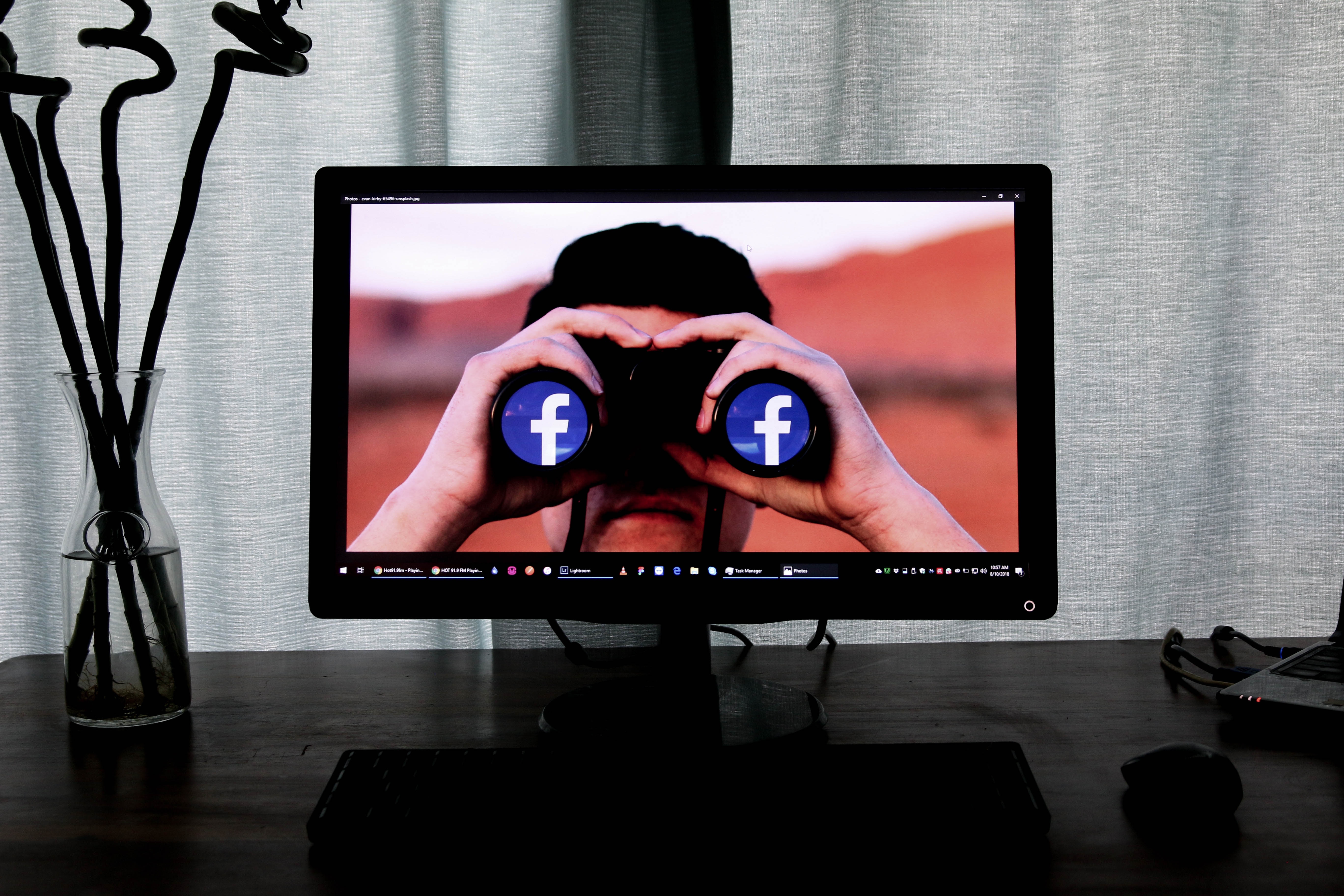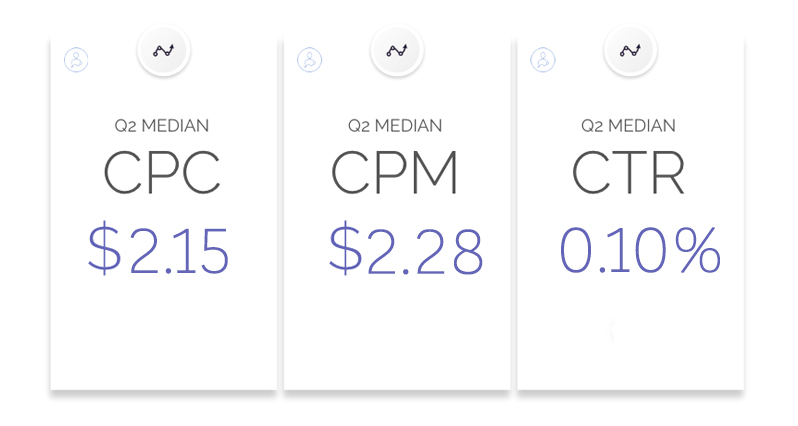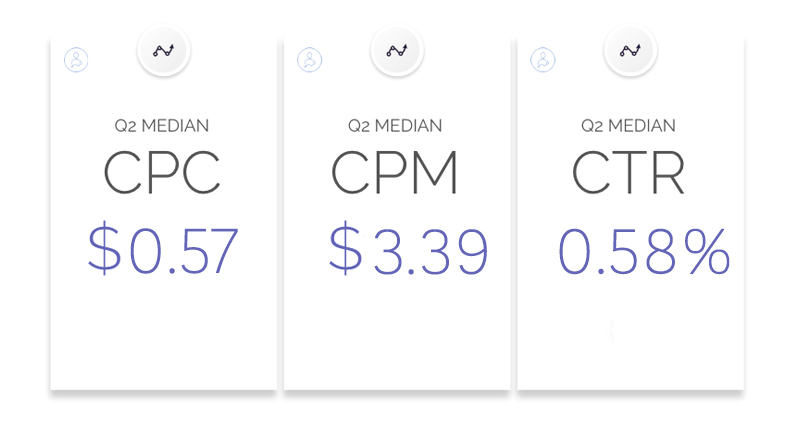
If you’re an agency looking to start Facebook advertising for your client, or if you’re planning to run ad campaigns by yourself for your business, you need to ask yourself the right questions. Instead of researching on multiple websites, blogs, or videos to get the answers to these questions, you can bookmark this starter kit.
Here, I will attempt to answer all questions you have about Facebook promotion, how effective Facebook advertising is, how much Facebook advertising costs, and the types of Facebook ads with examples!
As a bonus read, I’ve also included information about video ads on Facebook toward the end!
One of the most commonly asked questions is whether Facebook advertising is worth it and if advertisers should invest in Facebook promotion. Check out these stats:
These statistics about Facebook ads should be a good starting point for you to consider if Facebook promotion is worth it.
A bunch of experts will tell you in their blogs, videos, podcasts, and interviews that the answer to this question is, “it depends”.
While they are 100% correct, I will attempt to explain to you why they think so, and how I can do slightly better.
To answer the question,
Facebook advertising will cost you $0.27 per click if you’re measuring by CPC (cost per click), and $7.19 if you’re measuring by CPM (cost per thousand impressions)
Adespresso





Going back to “it depends”, here are the factors on which Facebook advertising cost depends on:
Before you start creating ad campaigns on Facebook and investing money, you need to identify the goal of this entire activity. With Facebook ads, you can:
Each objective maps directly with your Marketing Funnel – awareness (top of the funnel), consideration (middle of the funnel), and conversion (bottom of the funnel).
Within the Facebook Ads Manager, you will find different KPIs for each goal and each type of ad.
Example: Let us say that there are 2 types of Facebook users. Type A clicks on sponsored and promoted links but does not fill up any lead form. On the other hand, Type B does not click many ads but fills a form whenever they click on an ad. If your goal is to generate traffic to your website, Facebook will show your ad to Type A, but if your goal is to build a database of relevant leads, Facebook will show your ad to Type B.
Remember, the type of people who see your ad will be determined by your goal, and this will directly affect your advertising cost.
Facebook believes in creating value for advertisers by enabling them to reach their target audience. Facebook also provides a positive, relevant experience for its users.
The first thing you need to know about Facebook’s ad auctions is that the advertising spot does not go to the highest bidder, but is instead given to advertisers based ‘ad value’.
These factors contribute to ad value:
During the ad auction, your ad will be pitted against other similar ads, and the advertiser with the highest combination of all these three factors will get the ad spot.
This is very different from a traditional auction because the winner will be decided based on the ad that creates the most overall value, instead of just the monetary bid.
Before you begin advertising on Facebook, you have to consider what kind of a platform Facebook is.
Remember, Facebook users come to the social network to consume content, not to perform an action or do a task.
Facebook measures your ad quality based on something called the ‘Relevance Score’.
Relevance Score is calculated based on the feedback that Facebook receives from your target audience.
Facebook
If your ad gets more positive interactions, the ad’s Relevance Score will shoot up. Some positive indicators are video views and conversions. However, if your ad’s target audience hides or reports an ad, its score will be lowered.
Your Facebook ads will receive a relevance score between 1 and 10 (10 being the highest). As people interact and provide feedback on your ad, Facebook will increase or decrease the Relevance Score.
Note: Higher Relevance Score will lead to lower ad costs.
As a general rule of thumb, your Facebook Ads must be able to:
Now, none of the above is possible with regular text or image ads. Video ads, on the other hand, meet all these requirements.
Your Facebook Ads need to accommodate as much real estate as they can to avoid distractions from other posts. Remember, different ad placements require different image and video aspect ratios.
These are the best Facebook Ad sizes:
As a Facebook advertiser, you have a bunch of targeting options and campaigns to choose from that were covered earlier. Your choice of goal and campaign will decide the types of formats that are available to you.
If your goal is to increase your brand’s reach to more people, engage your followers, promote video views or drive more conversions, video ads are the best ad format.
You can learn more about Facebook Video Ads in the bonus read below.
A big advantage of Slideshow Ads is that you can use them for all advertising objectives I had mentioned before. This format combines multiple videos, images, text, and music to enable you to tell a better story. You can choose to display Slideshow Ads on smartphones, tablets, and computers.
If you have a product catalog, and you want to run an ad for the products in it on Facebook, then you should opt for Collection Ads. You can combine videos, slideshows or images taken directly from your product catalog.
This ad format allows users to interact with your ad, browse more products, and learn more about each product – everything within the Facebook app.
If you’re an e-commerce advertiser or if you have clients in the e-commerce industry, Collection Ads should be your go-to ad type because it allows you to show multiple pieces of content alongside a main creative.
If you want to build brand awareness or drive traffic to your store, Carousel Ads are a good option to experiment with.
This ad format allows you to add up to ten images or videos within a single ad. The added advantage over other ad formats is that each ad has its own unique link.
All ads on Facebook need to have visual creatives. When you add a relevant image of your product or service, you directly impact the success of your ad.
You have the option to choose to use a single image ad or use the carousel, collection, slideshow or Instant Experience to advertise with a combination of multiple images and videos.
Before you start making Instant Experience ads, you need to optimize your website for mobile use because Instant Experience is a mobile-only ad experience for iOS and Android operating systems.
Measuring how your ads perform is an important aspect of Facebook Advertising because you need to know what to track to evaluate if your ads are performing as expected. Here are the metrics you need to track for any campaigns that are driving traffic to a sign-up page of any kind:
Sometimes you might find that your ad creatives are blocked on Facebook. This happens when you violate Facebook’s ad policies. Here are some simple hacks you can follow to not get your ads rejected by Facebook.
As you read earlier, video ads have known to have the lowest CPC, making it the best ad format on Facebook.
This section is dedicated to Facebook Video Advertising. You will learn about the types of video ads, the requirements for Facebook video ads, how you can make engaging Facebook video ads, and what metrics you need to track.
The most recommended length for your video ad is less than 15 seconds. This ensures that your viewer will watch your video ad until the very end. Another advantage of having short video ads is that they can be re-purposed for Facebook’s in-stream ad placements.
However, if you wish to experiment with slightly longer video ads, you can place them in the Facebook feed, Marketplace and Messenger Home. The video ads placed here can be up to 240 minutes.
Facebook is a chaotic place. And the average human attention span is dropping rapidly. You are competing with other brands and the posts uploaded by your target audience’s friend list, which is why the first three seconds of your Facebook video ad will determine if the viewer wishes to continue watching your ad.
As a practice, start moving the most compelling part of your videos to the beginning.
You already know that 96% of Facebook users are on their mobile phones. As an advertiser, you need to take as much as ad real estate assigned to you to avoid distraction.
Square and vertical videos are the best for mobile users since most users hold their phones vertically.
Most Facebook users watch videos on mute by default. This means your video ads should be able to convey your message without sound, and the best way to achieve this is by making text-based video ads.
Videos have a long-lasting impression on the viewer. In fact, many online shoppers have admitted that they can recollect a brand easily if they’ve seen a video by the same brand before.
Add your logo to the video, use brand colors, include your brand’s typography and illustration style in your video ads.
Since you can choose to show your video ad in multiple places, there are different video length specifications for you to consider:
| Ad placement | Accepted length |
| User feed | up to 240 minutes |
| Instant article | up to 240 minutes |
| In-stream video ads | 5-15 seconds |
| Facebook Marketplace | up to 240 minutes |
| Facebook stories | 1-15 seconds |
| Audience Network banner video ads | 1-120 seconds |
| Audience Network native video ads | 1-120 seconds |
| Audience Network interstitial video ads | 1-120 seconds |
| Audience Network in-stream | 10-120 seconds |
Although you can upload longer videos in the user feed and Marketplace, it is recommended you make short videos, ideally within 15 seconds.
Here are the recommended Facebook formats for your video ads:
Whether you use Facebook video ads to drive traffic, build awareness, or to increase conversion, it is important to track the right Facebook metrics for your video ads. Here is a list of video ad metrics you can track on Facebook:
It is important to know how much of your video ad was played. Facebook calculates this by adding the number of unique seconds played, i.e. the seconds of the video that are not repeated.
For example, let’s say that a user has watched the first 5 seconds of your video ad, and then went back to watch the same 5 first seconds again. Facebook will not report this as a 10-second video view because the rewatched seconds are not considered.
The aim of this metric is to know how much of your video ad was consumed by your target audience.
If you’ve reached this far, chances are your hands are itching to get started with Facebook Advertising.
I would recommend you start experimenting with different ad formats and then look for solutions that help you scale your ad creation and automate ad sharing. It is 2019, and throwing people at a problem should not be your solution to scale.
If you’ve already identified the right ad formats, and now want to exponentially increase your ad output, check our Rocketium’s ad automation platform, built exclusively for advertisers and agencies such as yourself!
Also, if you get a chance, you should be experimenting with Facebook Quizzes.